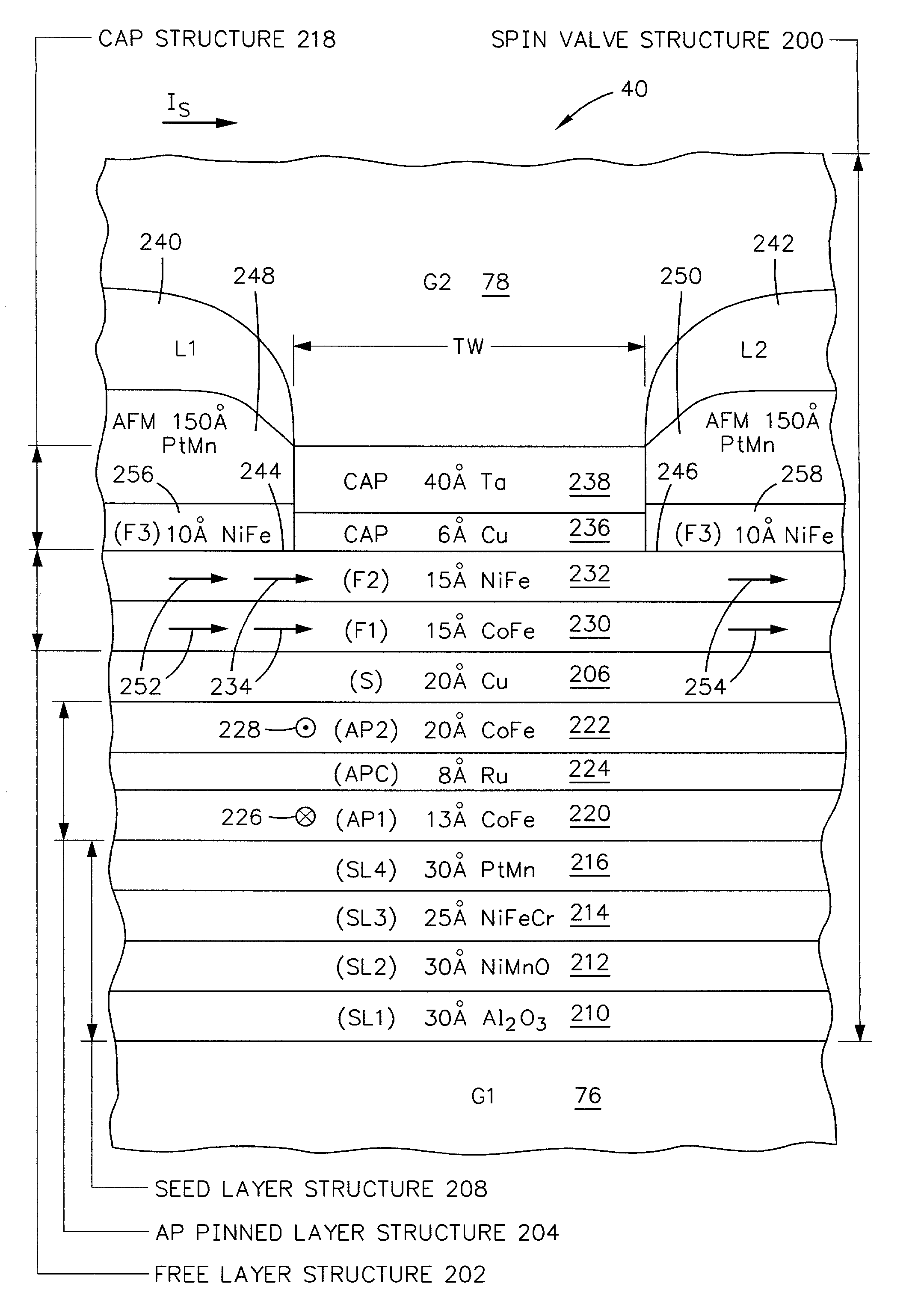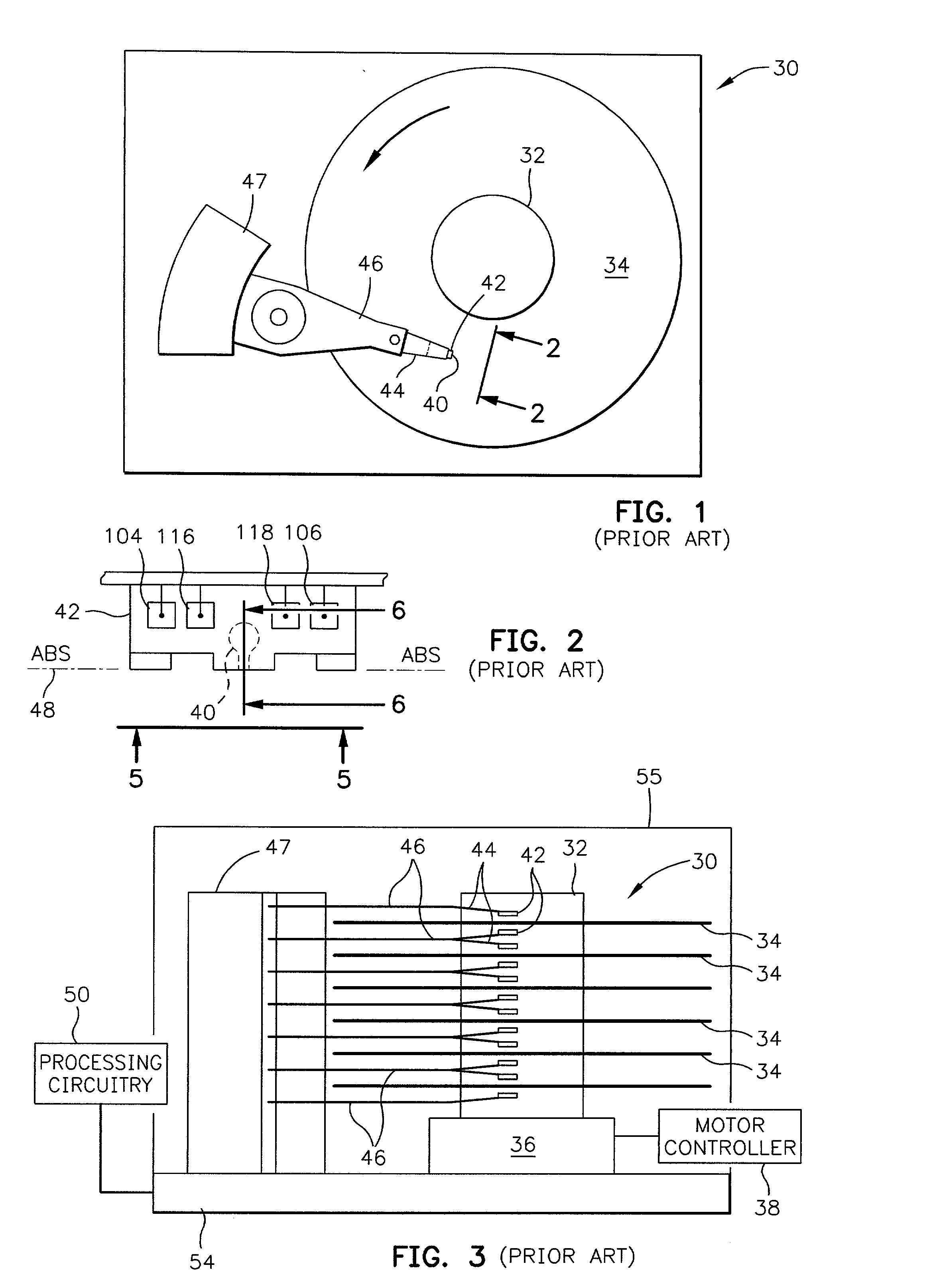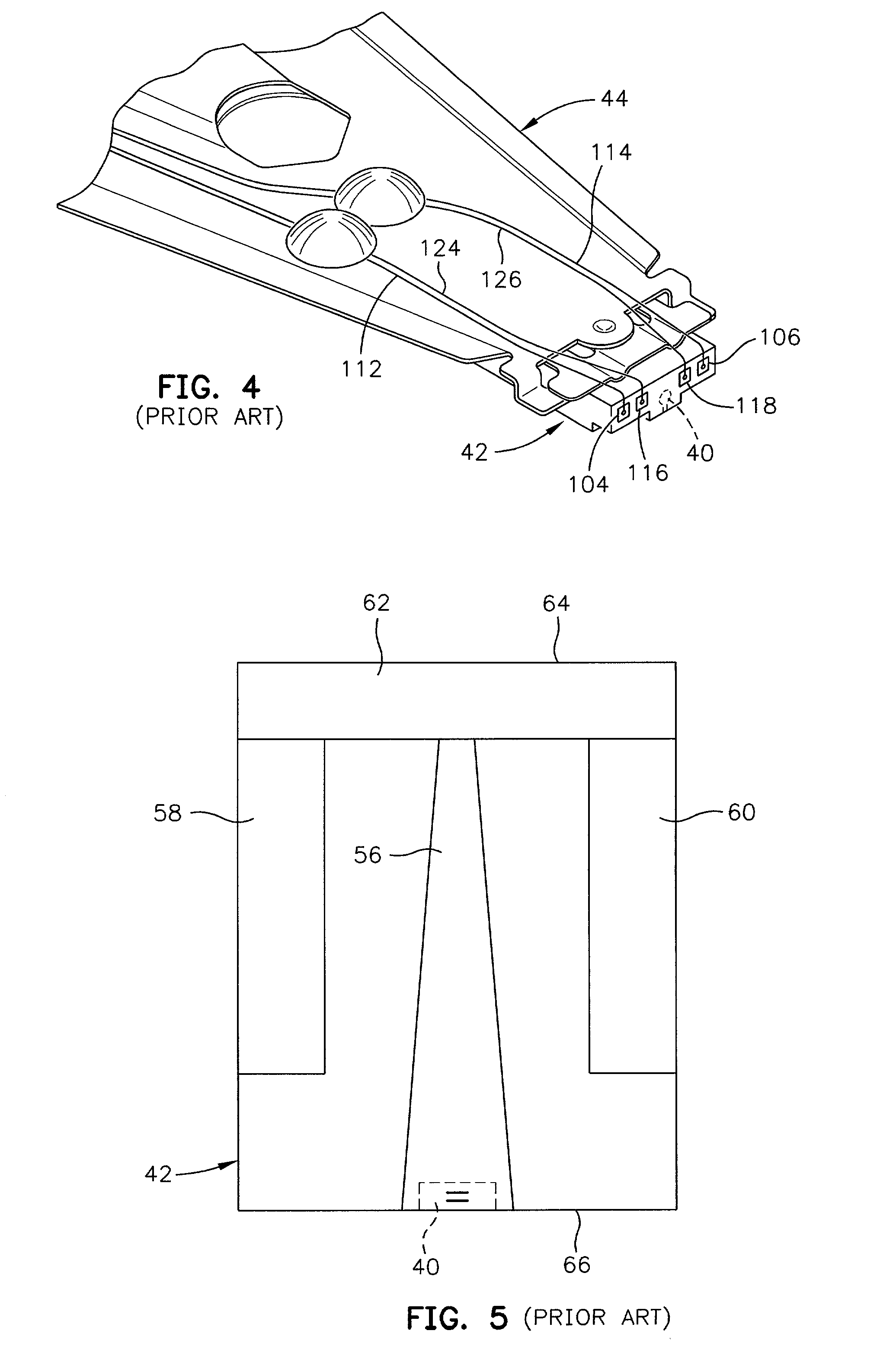Spin valve sensor with exchange biased free layer and antiparallel (AP) pinned layer pinned without a pinning layer
a technology of anti-parallax and free layer, which is applied in the field of spin valve sensor with exchange biased free layer and anti-parallax (ap) pinned layer pinned without a pinning layer, can solve the problems of unwanted extraneous fields, corrosive materials, and difficult schemes
- Summary
- Abstract
- Description
- Claims
- Application Information
AI Technical Summary
Benefits of technology
Problems solved by technology
Method used
Image
Examples
Embodiment Construction
were tested at the coupon level and Examples 1 and 2 were further tested at the row level. At the coupon level a single sensor is fabricated on a glass substrate and is not lapped to the ABS. Since lapping causes the aforementioned ABS compressive stress the ABS compressive stress due to lapping is not present at the coupon level. The row level is a row of read heads including their read sensors and is taken from a slider substrate where rows and columns of such read heads have been fabricated. After dicing the row of read heads from the slider substrate, the row is lapped to the ABS which causes the aforementioned compressive stress.
[0049] At the coupon level the magnetoresistive coefficient dr / R, the intrinsic uniaxial anisotropy field H.sub.Ki, the magnetostriction .lambda. (AP) of the AP pinned layers, the magnetostriction uniaxial anisotropy field H.sub.K.lambda., the resistance of the sensor R.sub.S and the magnetostriction of the free layer .lambda. (FL) were determined and / o...
PUM
| Property | Measurement | Unit |
|---|---|---|
| thickness | aaaaa | aaaaa |
| blocking temperature | aaaaa | aaaaa |
| thickness | aaaaa | aaaaa |
Abstract
Description
Claims
Application Information
 Login to View More
Login to View More - R&D
- Intellectual Property
- Life Sciences
- Materials
- Tech Scout
- Unparalleled Data Quality
- Higher Quality Content
- 60% Fewer Hallucinations
Browse by: Latest US Patents, China's latest patents, Technical Efficacy Thesaurus, Application Domain, Technology Topic, Popular Technical Reports.
© 2025 PatSnap. All rights reserved.Legal|Privacy policy|Modern Slavery Act Transparency Statement|Sitemap|About US| Contact US: help@patsnap.com



